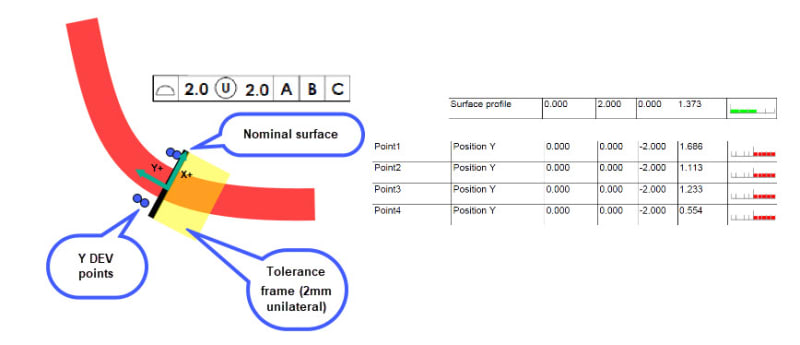We have a surface with a profile of .008 U .000 to ABC.
we measured the surface with a scanner after aligning to the Datums.
We ended up with a MIN of .0072 and a max of .0121 the software calculated the measured Profile as .0322
I am not sure if I do not understand how this is calculated and reported but it seems questionable see Attachment
If correct or incorrect were can I find were it is that explains how to record this.
we measured the surface with a scanner after aligning to the Datums.
We ended up with a MIN of .0072 and a max of .0121 the software calculated the measured Profile as .0322
I am not sure if I do not understand how this is calculated and reported but it seems questionable see Attachment
If correct or incorrect were can I find were it is that explains how to record this.

